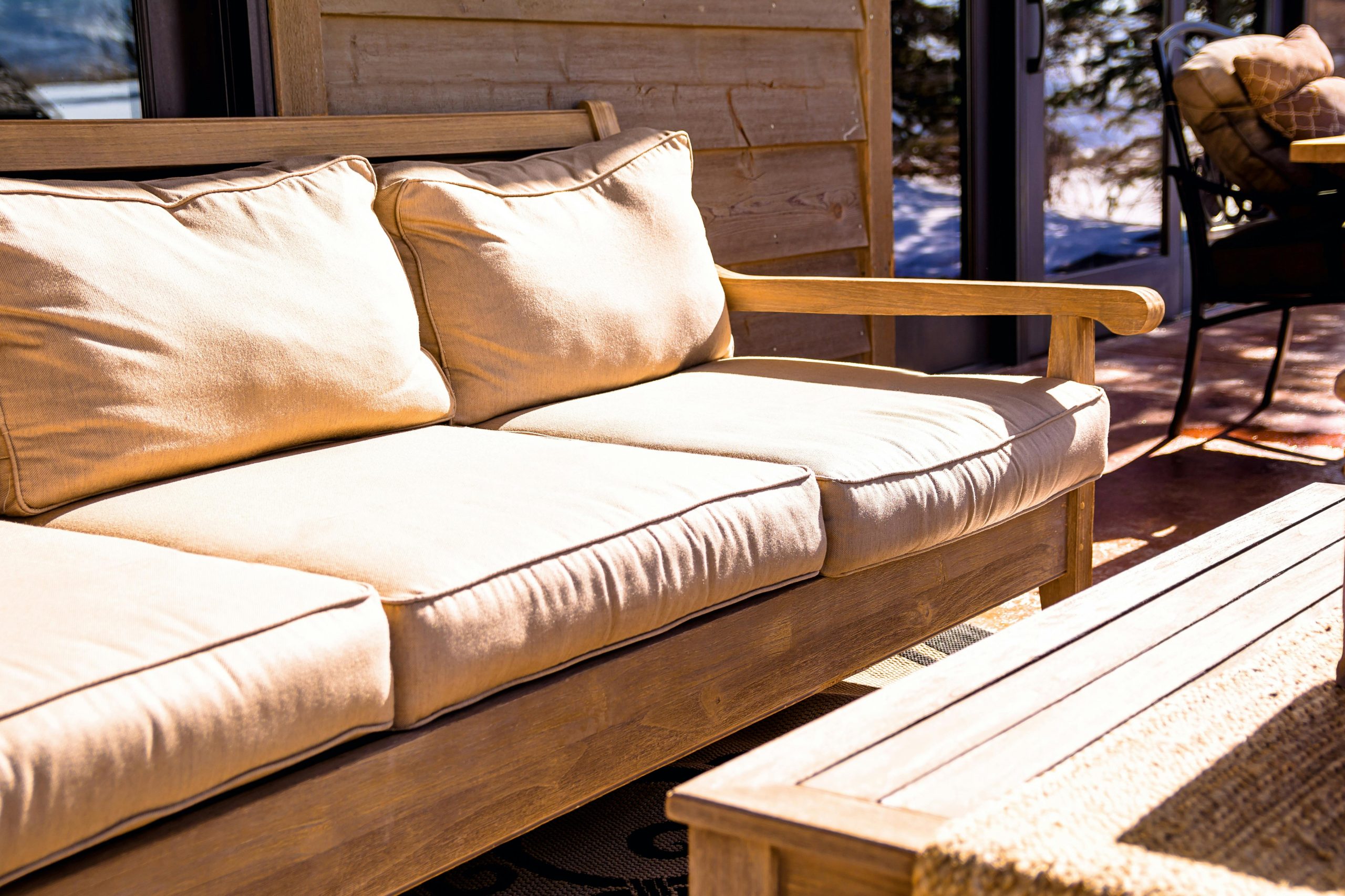Teak outdoor furniture is known for its beauty, durability, and natural resistance to the elements. Over time, however, exposure to sun, rain, and dirt can cause teak to weather and lose its rich, golden color, turning into a silver-gray patina. While some appreciate the aged look, others prefer to restore the furniture to its original luster. Refinishing teak outdoor furniture is an effective way to bring back its natural beauty and protect it from further wear.
In this guide, we’ll take you through a step-by-step process on how to refinish teak outdoor furniture, ensuring it looks as good as new.
Why Refinish Teak Furniture?

Teak’s natural oils help protect it from weathering, but over time, constant exposure to the elements can dry out the wood, leading to surface cracks and discoloration. Refinishing teak outdoor furniture not only restores its color but also helps preserve the integrity of the wood, ensuring it lasts for years to come.
Materials You’ll Need
- Teak cleaner or mild detergent
- Soft-bristle brush or sponge
- Sandpaper (medium-grit and fine-grit)
- Teak oil or teak sealer
- Clean cloths or rags
- Protective gear (gloves, mask)
Step 1: Clean the Teak Furniture
Before you start refinishing, it’s important to thoroughly clean the teak furniture to remove dirt, stains, and any mildew. Here’s how:
- Prepare a Cleaning Solution: Mix a few drops of mild detergent or teak cleaner with warm water in a bucket. Avoid harsh chemicals that can damage the wood’s surface.
- Scrub the Surface: Use a soft-bristle brush or sponge to scrub the furniture. Focus on any areas with visible dirt or mildew. Scrub along the grain of the wood to avoid scratches. For more stubborn stains, you may need a teak-specific cleaner, which can help remove mildew and deep-set grime.
- Rinse and Dry: Rinse the furniture thoroughly with clean water using a garden hose or spray bottle. Make sure all cleaning solution is washed away. Allow the teak to air dry completely before moving on to the next step, as any moisture trapped in the wood can affect the refinishing process.
Step 2: Sand the Teak Surface
Once the furniture is dry, it’s time to sand it down. Sanding removes the weathered gray patina and reveals the fresh, golden teak beneath. It also helps smooth out any rough spots or surface imperfections.
- Use Medium-Grit Sandpaper: Start with medium-grit sandpaper (80-120 grit) to remove the top weathered layer. Gently sand along the grain of the wood. If your furniture has intricate designs or hard-to-reach areas, consider using a sanding block or fine-grit sandpaper for those spots.
- Switch to Fine-Grit Sandpaper: After the initial sanding, switch to fine-grit sandpaper (220 grit) to smooth the surface further. This step ensures that the wood is even and ready to absorb the oil or sealer.
- Wipe Away Dust: Once you’ve finished sanding, wipe down the furniture with a clean cloth to remove any dust and debris. You can also use a slightly damp cloth for this purpose, but make sure the furniture is completely dry before moving to the next step.
Step 3: Apply Teak Oil or Teak Sealer
After sanding, it’s time to apply either teak oil or a teak sealer. Both options help protect the wood and bring out its natural color, but they serve slightly different purposes:
- Teak Oil: Teak oil penetrates the wood and restores its natural oils, enhancing its warm, golden color. It’s ideal for those who want to maintain the wood’s original appearance and protect it from drying out. However, teak oil needs to be reapplied regularly to maintain its effect.
- Teak Sealer: Teak sealer forms a protective layer on the surface of the wood and is designed to preserve the wood’s color longer without the need for frequent reapplication. It’s a good option if you want less maintenance but still desire the natural look of the wood.
How to Apply Teak Oil or Sealer
- Apply the First Coat: Using a clean cloth, apply the teak oil or sealer in even strokes along the grain of the wood. Ensure the entire surface is coated. Avoid over-saturating the wood; a thin, even layer is sufficient.
- Let It Soak In: Allow the oil or sealer to penetrate the wood for the recommended amount of time (usually around 10-15 minutes, depending on the product). If the wood absorbs the oil quickly, you may need to apply a second coat.
- Wipe Away Excess: After the oil has soaked in, use a clean cloth to wipe away any excess oil from the surface. Leaving excess oil on the wood can cause it to become sticky or attract dirt.
Step 4: Let the Furniture Dry
Once the oil or sealer has been applied, allow the teak furniture to dry completely. This drying process can take anywhere from a few hours to a full day, depending on the weather and the product used. It’s best to place the furniture in a shaded area while it dries to avoid direct sunlight, which can cause uneven drying.
Step 5: Apply Additional Coats (Optional)
For a deeper, more durable finish, you may want to apply additional coats of teak oil or sealer. If you choose to do so, make sure each coat is fully dry before applying the next one. Typically, two to three coats are enough to achieve a rich, lasting finish.
Maintenance Tips for Teak Furniture
After refinishing your teak furniture, maintaining it is key to preserving its appearance and durability. Here are a few tips:
- Regular Cleaning: Wipe down your teak furniture with a damp cloth regularly to remove dust and dirt. Deep clean it once or twice a year to prevent mildew buildup.
- Reapply Oil or Sealer: Depending on your climate and the level of exposure to the elements, you may need to reapply teak oil or sealer every 6-12 months.
- Use Furniture Covers: When not in use, cover your teak furniture to protect it from rain and direct sunlight, which can dry out the wood and cause it to fade.
- Avoid Harsh Chemicals: Stick to mild detergents or teak-specific cleaners when cleaning your furniture to avoid damaging the wood.
Conclusion
Refinishing teak outdoor furniture is a straightforward process that can dramatically improve its appearance and extend its lifespan. By following these steps—cleaning, sanding, applying oil or sealer, and maintaining your furniture—you can restore your teak pieces to their original beauty and ensure they remain a stunning addition to your outdoor space for years to come.
With the right care and maintenance, teak furniture can withstand the test of time, offering both functionality and aesthetic appeal. Whether you choose to embrace the natural weathered look or keep it golden and polished, refinishing your teak furniture is well worth the effort.
